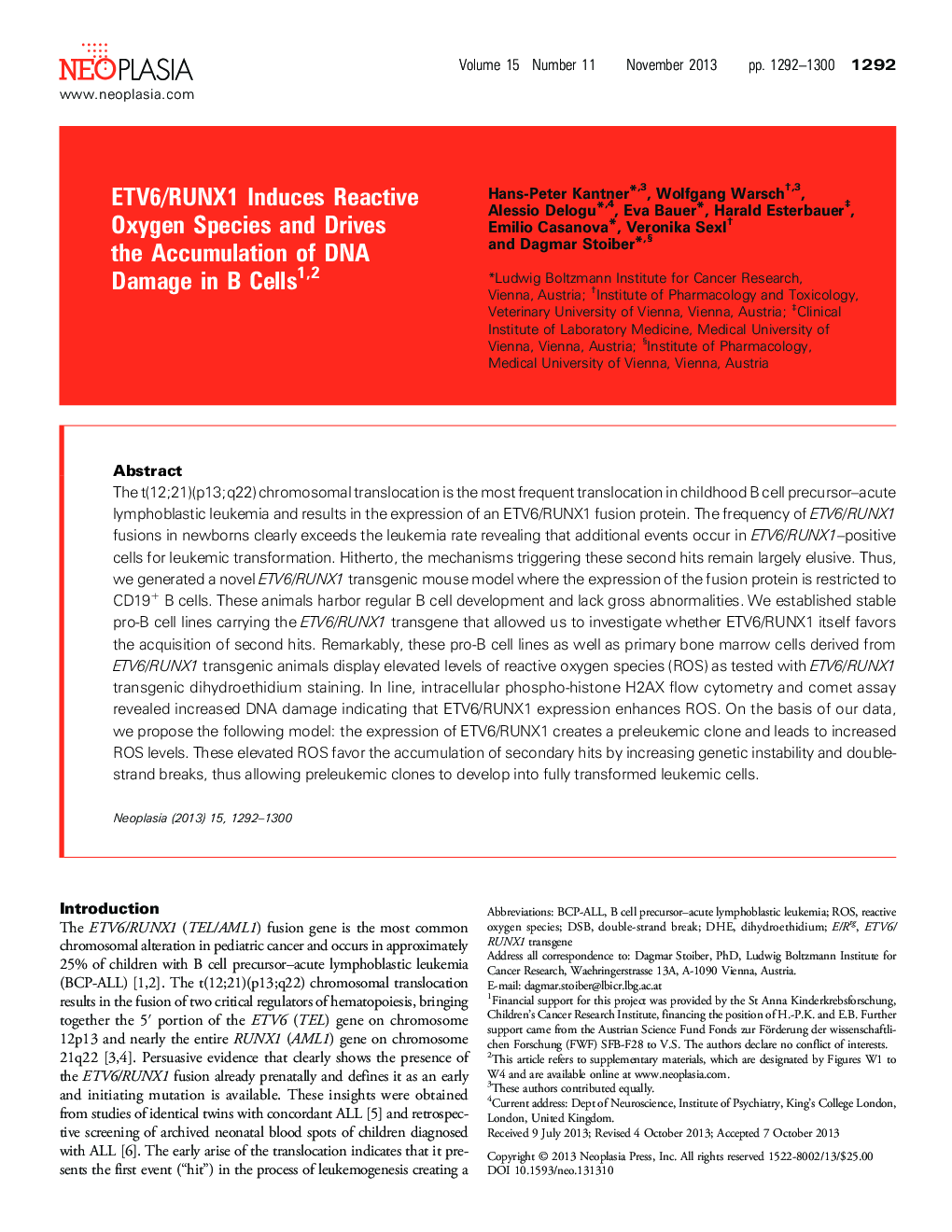| Article ID | Journal | Published Year | Pages | File Type |
|---|---|---|---|---|
| 2151227 | Neoplasia | 2013 | 11 Pages |
Abstract
The t(12;21)(p13;q22) chromosomal translocation is the most frequent translocation in childhood B cell precursor-acute lymphoblastic leukemia and results in the expression of an ETV6/RUNX1 fusion protein. The frequency of ETV6/RUNX1 fusions in newborns clearly exceeds the leukemia rate revealing that additional events occur in ETV6/RUNX1-positive cells for leukemic transformation. Hitherto, the mechanisms triggering these second hits remain largely elusive. Thus, we generated a novel ETV6/RUNX1 transgenic mouse model where the expression of the fusion protein is restricted to CD19+ B cells. These animals harbor regular B cell development and lack gross abnormalities. We established stable pro-B cell lines carrying the ETV6/RUNX1 transgene that allowed us to investigate whether ETV6/RUNX1 itself favors the acquisition of second hits. Remarkably, these pro-B cell lines as well as primary bone marrow cells derived from ETV6/RUNX1 transgenic animals display elevated levels of reactive oxygen species (ROS) as tested with ETV6/RUNX1 transgenic dihydroethidium staining. In line, intracellular phospho-histone H2AX flow cytometry and comet assay revealed increased DNA damage indicating that ETV6/RUNX1 expression enhances ROS. On the basis of our data, we propose the following model: the expression of ETV6/RUNX1 creates a preleukemic clone and leads to increased ROS levels. These elevated ROS favor the accumulation of secondary hits by increasing genetic instability and doublestrand breaks, thus allowing preleukemic clones to develop into fully transformed leukemic cells.
Related Topics
Life Sciences
Biochemistry, Genetics and Molecular Biology
Cancer Research
Authors
Hans-Peter Kantner, Wolfgang Warsch, Alessio Delogu, Eva Bauer, Harald Esterbauer, Emilio Casanova, Veronika Sexl, Dagmar Stoiber,
